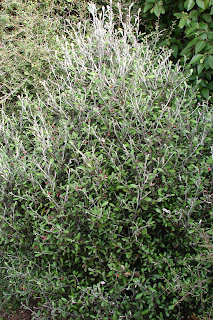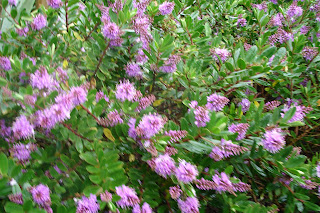PLANTING A HEDGE
A hedgerow or hedge are a fence
of living trees, shrubs or other plants and may consist of a simple row or a
pyramid of plant heights. The plants can provide food and shelter for wildlife
such as birds and lizards, and create more habitats than one level of
vegetation. Hedgerows also will establish contour guidelines for farming and
can save fields from wind erosion. Hedges are planted for a number of reasons;
the most common is for privacy. Hedges add another living element to your
garden and home, they are a thing of beauty. The act of trimming plants to
formally create a hedge is a very ancient gardening practice. A good hedge adds
value and character to your property, and best of all hedges are not that hard
to grow.
Choosing the right plant: This is crucial.
Make sure you know how high you want it, what sort of soil and conditions you
have. Choosing the wrong plant can have devastating results but unfortunately
it’s often the hardest part of growing a hedge. You need to make sure that the
plant you choose will grow where you want to plant it.
Soil Preparation: Prepare your soil with
compost and fertiliser, and water well before and after planting. Dig over your
soil well, add compost and organic matter to aerate the soil. Water the soil
well for a few days before planting. Add a general fertiliser to the soil
before planting to give the plants a head start. Set up irrigation systems for
your hedge at this stage if you plan to use one.
Planting: Check
what the recommended planting distance is, try to follow it. Obviously the
closer you plant your hedge the quicker it will join up to make as hedge
however it is not always recommended to do this.
Pruning: A prune once or twice a year is enough, with early spring a
good time for one then late summer to autumn. But light pruning more often over
the growing season can produce a soft and full hedge. Pruning helps to maintain
good healthy plant growth.
Fertiliser: Apply
a good layer of manure twice a year or alternatively apply general slow release
fertiliser twice a year.
Mulch: Hedges
love mulch, it helps reduce moisture loss and keep the weed levels down.
Spraying: If
you are religious about spraying, a good winter clean up spray of insecticide
and fungicide is ideal. But if you would rather spray when a problem occurs
this is quite acceptable.
Conclusion: Growing a hedge is not as hard,
many of us think “I don’t know how to, so I doubt I would be able to grow one”,
but it’s easy, just make sure you choose the right plant. Seek good garden
advice from our staff on what you want to achieve, what plants would be
suitable in your area. Hedges can be used to divide up areas of your garden,
just like walls in a house. Hedges add a different dimension to the garden that
can never be matched by any type of constructed fence. It’s a living garden
feature that will attract birds, change colour with the seasons and it height
adjustable. I don’t know of any fence that you can cut back, and the next year
you can let it grow a little taller if you like.
For an information sheet that includes a list of plants that are suitable for a hedge just pop into the nursery!













No comments:
Post a Comment